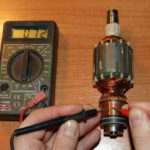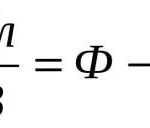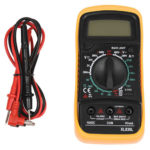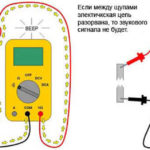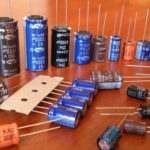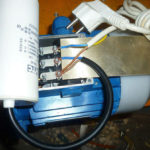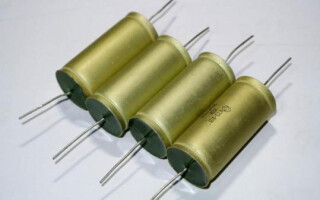Capacitors are widely used in technology. Their damage causes loss of performance of household appliances, electronics, other devices. External inspection does not always give a correct conclusion about the fault, so check the capacitor for damage with electrical measuring instruments - a multimeter or a tester.
Contents
How to check the capacitor's capacity with a multimeter
If you know how to check the performance of a capacitor with a multimeter, you can avoid many troubles. To do this, test the main characteristics and parameters affecting the operation. On the body of the radio component is indicated:
- Nominal capacity. Its value affects the amount of stored energy on the coils, which is generated when charging from a constant voltage source and is consumed in the electrical circuit during discharging.
- Voltage rating. The wrong value will lead to dielectric breakdown.
To determine faults it is necessary to understand the types of capacitors, they are polar and non-polar.
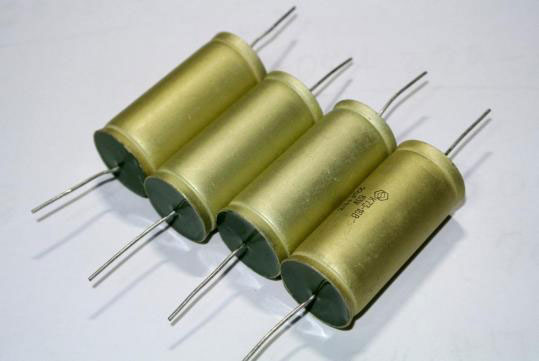
Polar capacitors are electrolytic capacitors that have a negative and a positive terminal. The polarity is indicated on the case (the minus indicates a tick) or determined by the size - the pin with the plus is longer. It is important to connect the electro-measuring device correctly to test electrolytic capacitors: "+" probe should be connected to the plus terminal, "-" probe - to the minus terminal. This connection is also made when wiring electrical circuits.
The other types are non-polar, so the way of connection to the tester is not important.
Measuring the resistance
You can check the serviceability of the capacitor by determining the resistance, using the ohmmeter mode. In this case, check:
- internal breakage;
- breakdown
- short circuit.
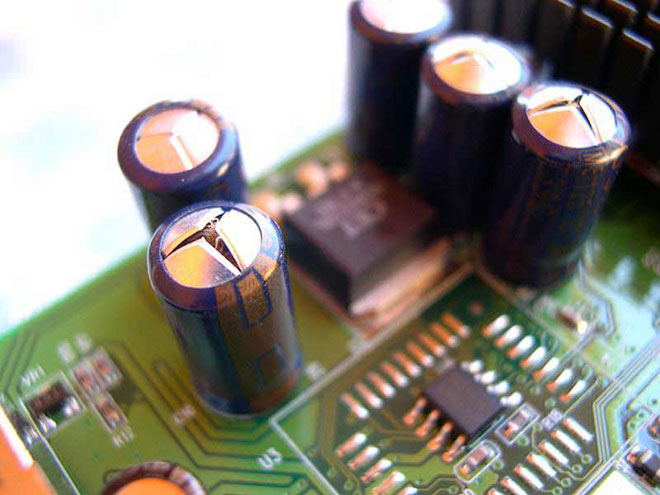
If the part is included in the circuit - it is unsoldered. Further actions are performed:
- Examine the appearance. Bulging, smudging, darkening, weakly fastened terminals mean a malfunction.
- The capacitor is discharged with a metal object, use a screwdriver, tweezers. Holding the handle of the tool, touch two pins at once. When discharging, a spark may occur.
- Adjust the instrument to check the condition of the capacitor, use the ohmmeter function. Use the pointer to select the measurement limit in the Ω sector or the continuity test.
- Connect the probes of the meter to the radio component. If an electrolytic capacitor is to be tested, the polarity is to be considered.
- At the initial moment of time the power supply of the multimeter charges the radio component, the rate of charge is directly proportional to the capacitance.
- According to the display of the digital multimeter a conclusion about the operability is made:
- if as the charge increases, the reading increases smoothly from 0 to the figure 1 (corresponding to infinity) - there is no malfunction;
- if the number 1 appears at once - there is damage (breakage);
- If the number 0 appears at once - there is a fault (short circuit or breakdown).
Using an analog device, the procedure for determining the fault is repeated. According to the deflection of the arrow judge about the suitability for work:
- smooth movement from 0 to the maximum value - there is no fault;
- arrow stays on the figure 0 - short circuit, replacement is required;
- the arrow immediately shows the maximum value - breakage.
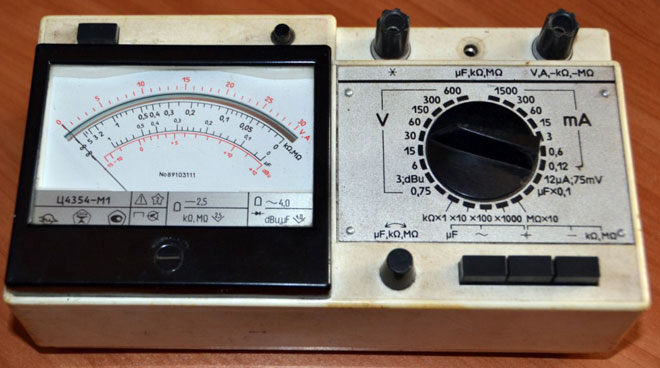
To check a non-polar capacitor:
- first discharge;
- select ohmmeter mode on the measuring device;
- set the measurement limit to megaohms;
- connect a tester to the capacitor;
- take the reading: if the resistance value is less than 2 megohms - there is a failure, more than 2 megohms or 1 - there is no failure.
The breakdown is determined as follows:
- apply a voltage higher than the nominal voltage;
- measure the resistance: in case of breakdown it does not change.
Measuring the capacitance
To check the capacitance of a capacitor a multimeter must have this function. To make the measurement, the Cx sockets with polarity "plus" and "minus" are used. When testing, the resulting value is compared to the rating. Procedure:
- Remove the charge.
- With the switch set the limit of the capacity measurement in accordance with the nominal value.
- Use Cx sockets for measurement. If the cell is electrolytic pay attention to polarity: "plus" terminal connect to "+" socket, "minus" terminal connect to "-" socket. Take a reading.
- Compare the measured value with the nominal value. If there is no big deviation - there is no malfunction. Otherwise replacement is required.
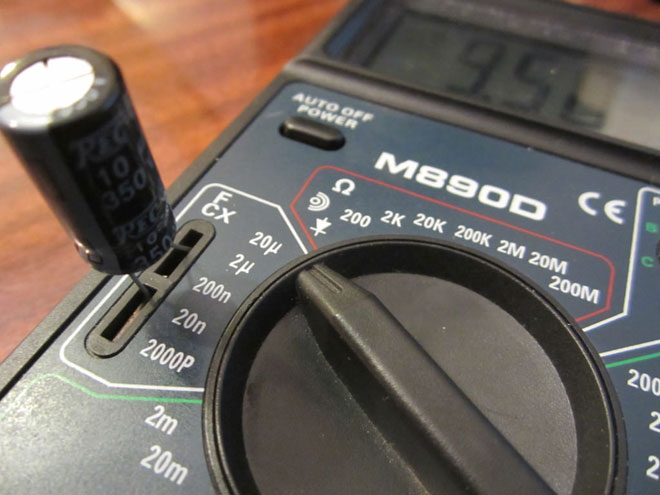
To check the worthiness of a ceramic capacitor:
- It is discharged.
- Set the capacity measurement limit closest to the nominal value.
- Insert the leads into the Cx sockets without regard to polarity.
- Measure the capacitance. Compare the measured value with the nominal value. If the reading corresponds to this value, the capacitor is not damaged. If it is very different or equals 0, the capacitor must be replaced.
Deviation of the measured parameter by no more than 30% of the nominal value is allowed.
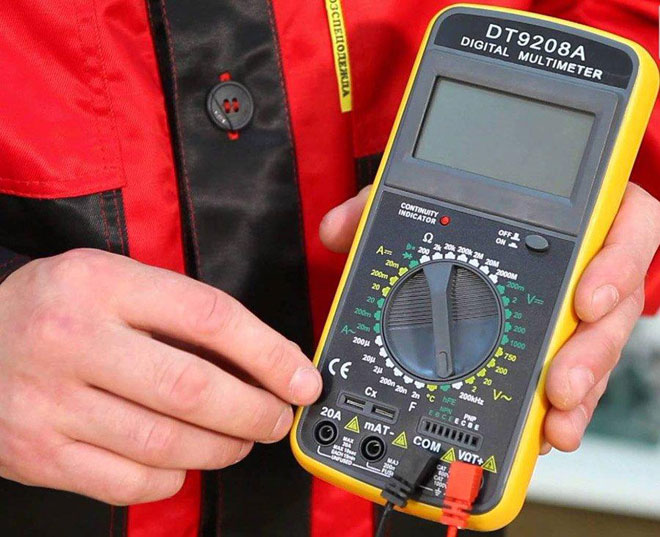
If there are no Cx sockets, the presence of capacitance is judged indirectly by measuring the resistance with an analog device. To do this:
- Remove the charge.
- Set the multimeter to ohmmeter mode.
- Connect the probes to the terminals of the capacitor, charge from the battery ohmmeter. By the time the arrow deflects to infinity, make a conclusion about the capacitance. When measuring up to 100 μF the arrow deflects quickly, it indicates a small capacitance.
The electrical parameters decrease during operation, so they are periodically checked.
Measuring Voltage
Let's look at how to determine the functionality by measuring the voltage. To do this, you should:
- Charge the radio component from a DC voltage source that is less than the rated voltage.
- Set the measurement function to voltmeter mode. Select a limit equal to the voltage of the power supply.
- Connect the probes of the multimeter to the capacitor terminals, considering the polarity if required. Make a measurement.
- Compare the measured value with the power supply voltage. If there is no big difference there is no fault. The true value will be in the initial moment of time. Then it will decrease due to discharge.
Check without instrumentation
Without measuring the parameters the fault is indicated by defects in appearance:
- stains on the surface of the case;
- bloating, deformation of the upper notch on imported electrolytic capacitors;
- leakage of electrolyte.
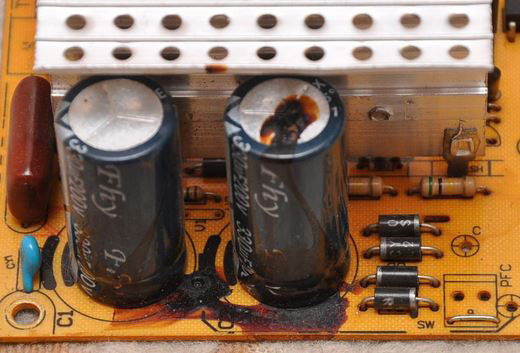
Other ways to monitor the malfunction are used at home. It is necessary to:
- connect to the power supply, the voltage should not exceed the rated voltage;
- take the LED (low-voltage lamp with two wires), touch the pins of the LED to the legs of the capacitor;
- flash of the LED (brief glow of the lamp) will confirm operability.
To determine the efficiency of a high-capacity capacitor:
- connect to a power supply with a voltage lower than the nominal one;
- remove the charge with a metal object.
The presence of a spark during discharge will confirm operability. Observe caution when removing the charge, take protective measures, since the discharge is accompanied by a powerful spark and sound. To reduce the spark use a discharge through a resistor.
Peculiarities of checking different types of capacitors
There are many types of radio components, which differ in dielectric material, plates, type of electrolyte, so they have different ways of diagnosing the working condition.
To check the fitness of a ceramic capacitor, set the highest measurement limit of an ohmmeter. A resistance of at least 2 megohms will be an indication of serviceability. At other values the part is changed.
To test a tantalum capacitor, select the highest measurement limit in ohms. When the resistance is 0, it is replaced. Before testing an electrolytic capacitor of high capacity and high voltage, maximum discharge is necessary. Residual voltage will ruin the device.
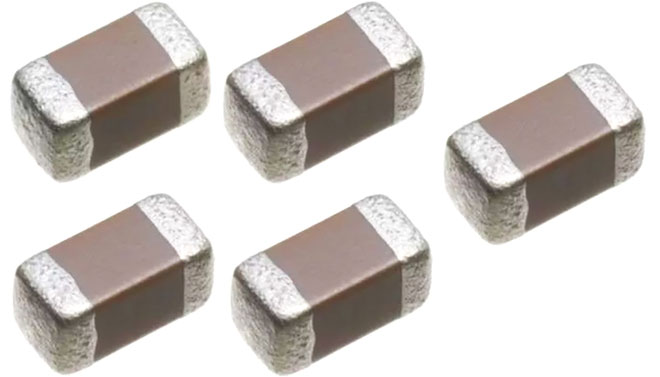
SMD capacitors are non-polar, so they are tested like ceramic capacitors, determining the suitability in ohmmeter mode.
A film capacitor with a short circuit will have a reading of 0. If there is an internal break, the analog multimeter will show infinity, the digital multimeter will show 1.
Testing without unsoldering
It is not possible to investigate a radio component without unsoldering it, the reading will be incorrect from the influence of other circuit elements.Introduces an error in the measurement of the neighborhood of transformers, inductors, fuses. Connecting them in parallel or in series will increase or decrease the test result. To properly assess the condition, the capacitor is unsoldered.
Without unsoldering it is possible to roughly determine the operation of a section of the circuit. This is done by touching the styli to the legs of the part and measuring the resistance. If the reading increases, then decreases - the part is serviceable.
It should be remembered that monitoring of capacitors is only possible up to a maximum value of 200 µF. Electrical measuring instruments do not measure large parameters. With a value of less than 0.25 μF, capacitors are checked only for short circuits.
Related articles:
